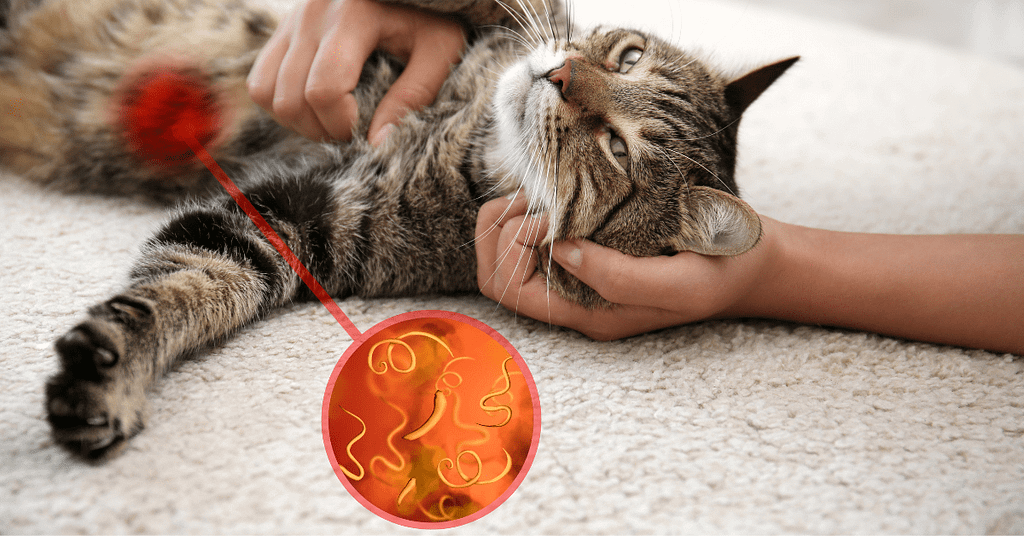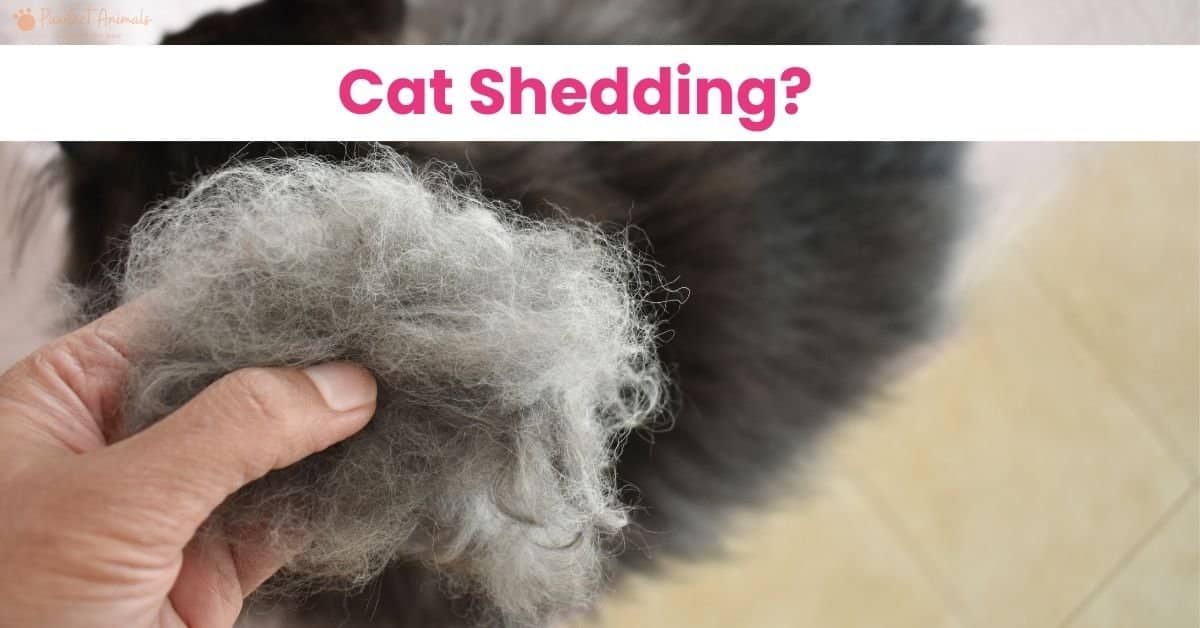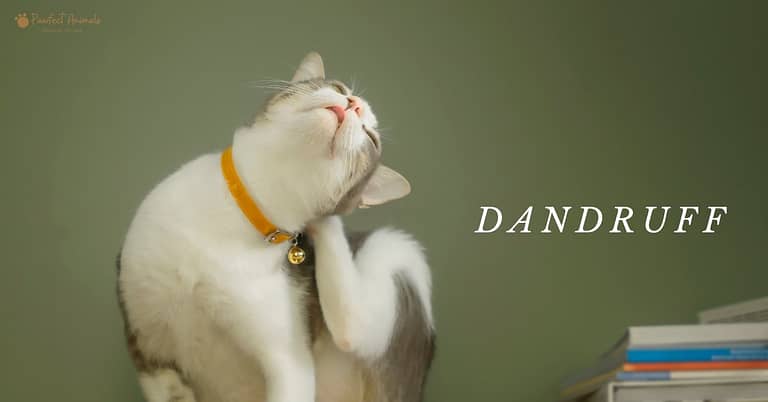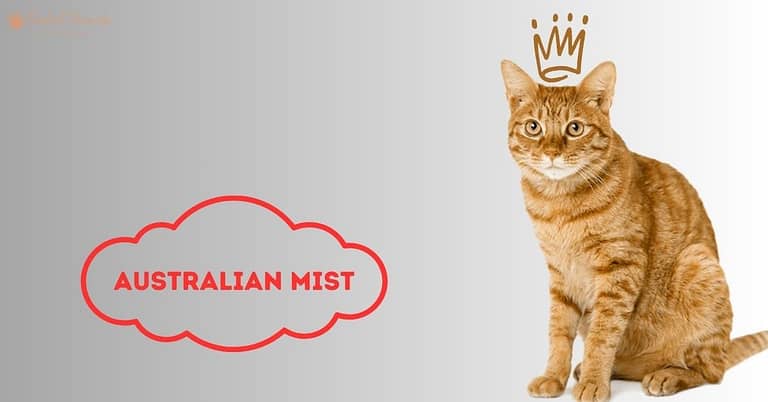Cat shedding is a natural process, but excessive shedding can be a concern for pet parents. In this article, we’ll address common questions like “Why is my cat shedding so much?” and “How can I reduce cat shedding?” Let’s dive into the world of cat fur and find practical solutions.
Potential Causes of Cat Shedding
The shedding of old fur and the growth of new hair is a natural process in cats, allowing them to maintain their coat’s health and condition. Because this is a natural process, all cats shed to some extent. However, the amount of shedding can vary from cat to cat as it depends on breed, age, and overall health. Common reasons for cats to shed are described below.
Seasonal changes: Seasonal shedding is completely normal in cats. When the weather gets colder, cats grow a thick coat to stay warm, but when the weather gets hotter, cats quickly shed this extra fur to avoid overheating. It is just like changing clothes. Shedding is most prominent in spring and fall as they correspond to temperature changes during these seasons.
Breed and genetics: Each breed of cat has a different coat. Hair loss also depends on the cat’s coat, such as some cats have thick and lighter, some cats have long hair and some have short hair. This is why some cats shed less than other breeds in certain situations.
Age matters: Sometimes a cat’s excessive shedding can be due to its age. Kittens often shed their fur and grow new fur. Older cats also shed as they age. Cats usually groom themselves. Sometimes they are unable to do this because they are too old or have sore joints. If you notice that hair loss is due to age, you can reduce it by brushing more.
Imbalance Diet: Your cat’s diet affects shedding. If your cat’s diet lacks certain nutrients, it can affect their fur, ultimately leading to excessive shedding.
Home Conditions: If your home is too hot, dry, or too dusty, it can cause problems for your cat’s coat. Ensuring that your home is comfortable, clean, and tidy is very important. Additionally, anxiety, fear, a change in the home, or having another pet can also cause bleeding.

These reasons are common, but your cat may be shedding not because of these reasons, but because of something else you don’t know about. So, if a cat is shedding a lot or seems sick, talking to a vet may be wise.
Health problems that can lead to hair loss
Oftentimes, excessive cat shedding is caused by some health problem. Shedding is normal for cats, but these health conditions make it worse. As a cat health expert, I’m here to provide you with simple and helpful information about these conditions without overcomplicating them.
Allergies: Just like humans, cats have allergies. These allergies are caused by certain ingredients in food or substances in the environment and cause hair loss in cats. You just need to know what is the cause of the allergy and if you do not understand the reason, you can take the help of a Vet.
Fungal or Bacterial Infections: Sometimes cats get various skin problems like dermatitis and fungal or bacterial infections. These problems make your cat itchy and uncomfortable, causing her to shed more hair. But don’t worry because your doctor can find out what’s wrong and prescribe medication to treat it.
Hormonal Imbalances: Certain problems like hyperthyroidism and Cushing’s disease can throw your cat’s hormones out of balance. These problems can also lead to more shedding. Consult a doctor in such situations as your doctor can prescribe the right medicine to treat these problems.
Parasites: Fleas, ticks, and worms can cause intense itching on your cat’s skin. When your cat scratches and licks a lot, it sheds more. Make sure you use the right products to keep these pests at bay, such as using special shampoos or special grooming tools.

In summary, it is natural for cats to shed as long as it is not excessive. And if you notice a change in your cat’s behavior, don’t hesitate to talk to your vet because he can guide you better.
Can we stop the cat from shedding?
Many owners often ask the question how to stop a cat from shedding completely? But before this question, an important question is “Can we stop it”? The simple answer is “No”. You can never completely stop a natural process. However, there are some home remedies to reduce it.
Home remedies to reduce excessive cat shedding
Excessive cat shedding can be a problem for owners. But this problem can be reduced with some effective home remedies. Avoiding fleas and insects, improving their diet, brushing regularly, keeping them hydrated, using a humidifier, giving supplements, and keeping their world calm and clean can help prevent excessive shedding.
Best Diet is a Key: A healthy diet is the best remedy for this problem. Some cat foods are packed with the best ingredients, such as omega-3 fatty acids. These ingredients reduce shedding and make the cat’s fur shiny.
Hydration plays an important role: Make sure your cat drinks enough water. Always keep the water bowl full. Because dehydration dries out their skin which causes excessive shedding.
Grooming is a defense: Good grooming is the best defense against excessive shedding. It plays an important role in getting rid of loose. Plus, it’s fun for your furry friend!
Combat dry air: A humidifier is a great way to add moisture to the air in the home. Dry air is harmful to your cat’s coat and can cause excessive shedding, especially in winter when the air is very dry.
Supplements are necessary: Various supplements such as fish oils can work wonders to prevent excessive shedding in cats. These supplements provide the right type of fat to keep the coat healthy.
Ensure a stress-free environment: One of the main reasons your cat sheds more can be stress. Keep the cat’s living space calm and clean to reduce stress.
These home remedies can help reduce your cat’s drooling. If you are confused about anything, consult your doctor for better guidance.
When to Call the Vet?
If your cat shows any unusual changes, for example, excessive shedding, licking, scratching, and red spots on the skin. Also, if you notice small insects such as fleas, ticks, or worms on their fur, contact the vet as soon as possible. These things could mean that your cat has a health problem. So, don’t worry when you see these symptoms, just call the doctor, he will guide you in this regard.

Low-maintenance cats that don’t shed a lot
If you’re looking for a cat that doesn’t shed as much as other breeds, a few choices may be right for you.
- Russian Blue
- Sphynx
- Cornish Rex
- Devon Rex
- Siamese
- Bengal
- Burmese
- Scottish Fold
- Australian mist
But keep in mind that these cats also shed to some extent, although it is quite less compared to other breeds. Additionally, even if you have a low-shedding cat, regular grooming, proper nutrition, and routine veterinary care are essential to maintaining its health and coat.


